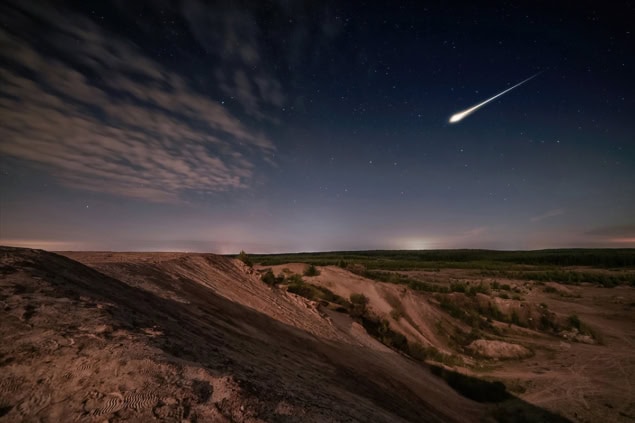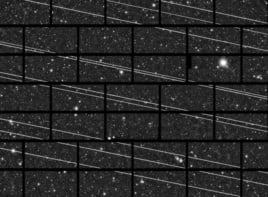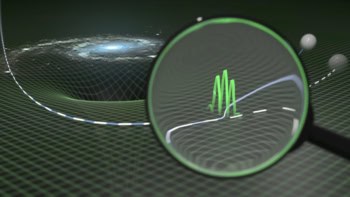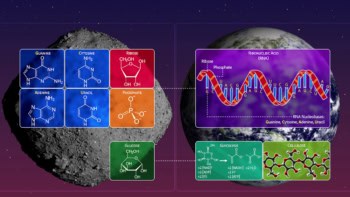Iain Dale-Trotter reviews The Meteorite Hunters: On the Trail of Extraterrestrial Treasures and the Secrets Inside Them by Joshua Howgego

Every mystical quest features a journey riddled with challenges, a cast of colourful characters, and a treasure trove that unlocks more intrigue. The Meteorite Hunters: On the Trail of Extraterrestrial Treasures and the Secrets Inside Them is no exception to this canon.
Written by science journalist Joshua Howgego, the book takes the reader on the pursuit of space rocks and how they have unravelled our understanding of the solar system. And, as is so often the way in science as it is with quests, the search and the people you meet along the way are just as interesting as the discoveries themselves.
Towards the end of Meteorite Hunters, Howgego confides that his aim for the book distils down to two questions: “how do you find them, and what do they tell us?”. Indeed, the tale follows this two-act structure pretty neatly. The first half sees the eponymous hunters and their adventures take centre stage, with enough science dotted throughout to set the scene for the second half, which takes us right up to date with the very latest missions to asteroids Itokawa and Ryugu, and the return of the Bennu sample from the OSIRIS-Rex mission. It is a tactic that is kind to the general reader, and there are plenty of interesting anecdotes and characters to keep things from getting too dry, along with some truly astonishing astrophysics.
The journey begins with a look at how people came to understand that rocks can fall from the sky. The truth of course is that civilizations throughout human history have (separately but repeatedly) come to this realization. Howgego highlights how existing knowledge and compelling physical evidence of meteorites from central South American cultures was dismissed as primitive superstitious nonsense by European invaders in the 16th century. It is the perennial story of knowledge being lost during the waves of European colonialism.
Western understanding of meteorites only really gets going in the very late 18th century, and Howgego introduces two key characters who helped cement the topic as a legitimate line of enquiry. Ernst Chladni was a German polymath who wrote the first book on meteorites in 1794 but whose ideas were initially ridiculed. Meanwhile, playwright and journalist Edward Topham had a large meteorite fall on his land in 1795 (witnessed by labourer John Shipley) and went on to the champion the idea of rocks falling from the sky. However, it would take until the mid-1960s, and the anticipation of lunar samples being returned by the Apollo missions, for this area of study to crystallize into the modern field of meteoritics.
Drama and dust
The origin story of many modern meteorite hunters – those who go out searching for these space rocks – often begin in a similar vein to that of Topham, with an inspiring find close to home leading to elaborate expeditions to track down historic falls. The meteorite scientists Howgego interviews are diplomatic when asked about the hunters – after all, they have the resources to investigate reports of fresh falls much more quickly than the hunters can decipher historical reports and local legends. But there is also a real tension between the two camps – there are serious issues with permanent loss of data from the scientific record through mishandling or denial of access to specimens in private collections.
Howgego goes on to discuss efforts to track meteorite falls in real-time, which may be more scientific and systematic but are no less dramatic. Modern programmes involving networks of automated digital cameras can trace their origins back to a resourceful young scientist, Zdeněk Ceplecha, who narrowly escaped the worst of the Stalinist purges in soviet Czechoslovakia. In 1959 he managed to reconstruct the trajectory of an incoming meteorite to within a very respectable margin of modern computations by using long-exposure photographic plates. In a beautiful full-circle moment, the tracking network initiated by Ceplecha followed a 2002 meteorite fall that turned out to have the exact same trajectory as that 1959 space rock – confirming that the two came from the same parent body.
One of the book’s more modern – and most interesting – characters is Swedish jazz guitarist Jon Larsen. His obsession of sifting through tonnes of urban dust for elusive micrometeorites has yielded invaluable (and beautifully photographed) specimens – something dismissed as an urban myth before someone with his patience and ingenuity came along. These pristine remnants of the protoplanetary disc, literal “star dust”, offer unique insights into the earliest days of our solar system.
Alongside his array of characters, Howgego creates a beautiful and accessible rendering of the complex astrophysics underlying the evolution and structure of our solar system as revealed from the study of meteorites. The descriptions of how competing theories have developed and merged also gives a realistic insight into the scientific method in action; consensus building, refinement through accretion of evidence, and an admission that the picture is not yet settled.
The hunt for, and study of, meteorites touches upon an unexpected variety of topics in modern science. But Howgego manages to weave them seamlessly together into a rich fabric, allowing his colourful cast of characters to tell their fascinating stories.
- 2025 Oneworld Publications 272pp £18.99 hb / £9.99 ebook



